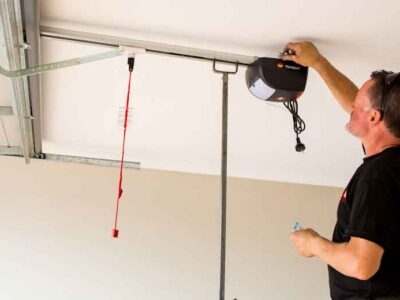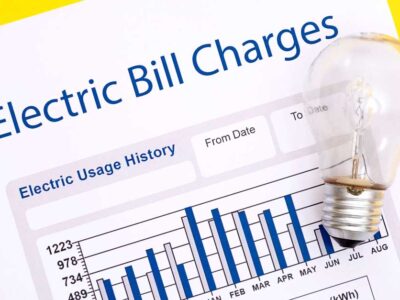When the summer heat is at its peak, nothing feels more disappointing than switching on your air conditioner only to discover that it’s blowing warm air. Instead of providing the cool comfort you rely on, the system begins to feel more like a heater. This issue is more common than many people realize, and while it may cause immediate frustration, it also presents an opportunity to understand how your cooling system works. We will explore the primary reasons why this occurs and provide practical steps you can take to resolve the issue, ensuring your home remains comfortable when you need it most.
Common Reasons for Warm Air and Practical Solutions
- Thermostat Settings May Be Incorrect
One of the simplest and often overlooked causes of warm air from your air conditioner is incorrect thermostat settings. If your thermostat is accidentally set to “heat” instead of “cool,” the system will naturally blow out warm air. In some cases, the fan may be set to “on” rather than “auto,” which means it continues circulating air through the ducts even when the cooling cycle isn’t running. This can give the impression that your system is failing when it’s simply a settings issue. Double-checking your thermostat should always be the first step before jumping to costly assumptions.
If the thermostat appears outdated or unresponsive, replacing it with a programmable or smart model can help maintain better control and prevent unnecessary discomfort. For homeowners dealing with this problem, scheduling air conditioning repair in Killen can also ensure the thermostat and overall system are functioning properly. A small adjustment at the thermostat can often save time, money, and frustration, making this the easiest fix to start with.
- Refrigerant Levels Might Be Low
Refrigerant is the lifeblood of your air conditioning system, responsible for absorbing heat and producing the cool air you rely on. When refrigerant levels are low, typically due to a leak, the system loses its ability to cool effectively. Instead of producing chilled air, it may only blow out warm or room-temperature air. Low refrigerant is not something that can be fixed with a simple refill; the leak must first be located and repaired to restore normal operation. Ignoring this problem can put unnecessary strain on the compressor, potentially leading to larger breakdowns. If you notice hissing sounds, ice buildup on the coils, or reduced cooling capacity, these can all point toward refrigerant-related issues. Addressing this issue promptly not only restores your comfort but also prevents further damage to your air conditioner, keeping it efficient for longer.
- Dirty or Clogged Air Filters
Air filters play a critical role in keeping dust, dirt, and other particles from circulating through your system. When filters become dirty or clogged, they restrict airflow, forcing your system to work harder. This restricted airflow can cause the system to overheat, resulting in warm air being pushed into your home instead of cool air. Regularly checking and changing filters every one to three months, depending on usage, is an easy way to avoid this problem. A fresh filter allows air to move freely, reducing strain on the components and ensuring consistent cooling. Beyond just preventing warm air, clean filters also improve indoor air quality, reduce energy bills, and extend the life of your equipment. Something as simple as filter maintenance can save households from experiencing unnecessary discomfort during peak heat periods.
- Blocked or Dirty Condenser Unit
The outdoor condenser unit is responsible for releasing the heat your system removes from inside your home. If this unit is blocked by debris, dirt, leaves, or even overgrown plants, it cannot function properly. When heat cannot escape efficiently, your system loses its ability to cool and instead begins circulating warm air back into the room. Regularly inspecting the outdoor unit and ensuring it has at least two feet of clearance on all sides can help maintain its performance. Cleaning away dirt, gently spraying down the coils with a hose, and scheduling professional tune-ups can help keep the condenser operating efficiently. This component is often neglected since it sits outside, but its condition directly impacts how well your air conditioner delivers cool air indoors. Taking care of the condenser ensures the system operates effectively without interruption.
- Frozen Evaporator Coils
The evaporator coils absorb heat from your indoor air, allowing the system to deliver cool airflow. However, when these coils freeze, the cooling process is disrupted. Frozen coils can occur due to restricted airflow, low refrigerant, or dirty coils. When this happens, the air coming from your vents may feel warm instead of cool. Identifying frozen coils often involves noticing ice buildup around the indoor unit or reduced airflow. If you suspect frozen coils, the system should be turned off to allow the ice to melt, but the underlying cause must also be addressed to prevent recurrence. Keeping coils clean, ensuring proper airflow, and addressing refrigerant issues quickly are all ways to avoid frozen coils in the future. This problem might seem surprising, but it’s one of the most common reasons for sudden warm air from an air conditioner.
When your air conditioner begins blowing warm air, it may feel like a major setback, but understanding the underlying causes can make the problem far less intimidating. Addressing these factors promptly ensures that your air conditioner remains reliable, efficient, and capable of providing comfort throughout the summer. By staying proactive with maintenance and being aware of these common challenges, you can prevent unexpected breakdowns and maintain a cool and refreshing living environment when you need it most.

















